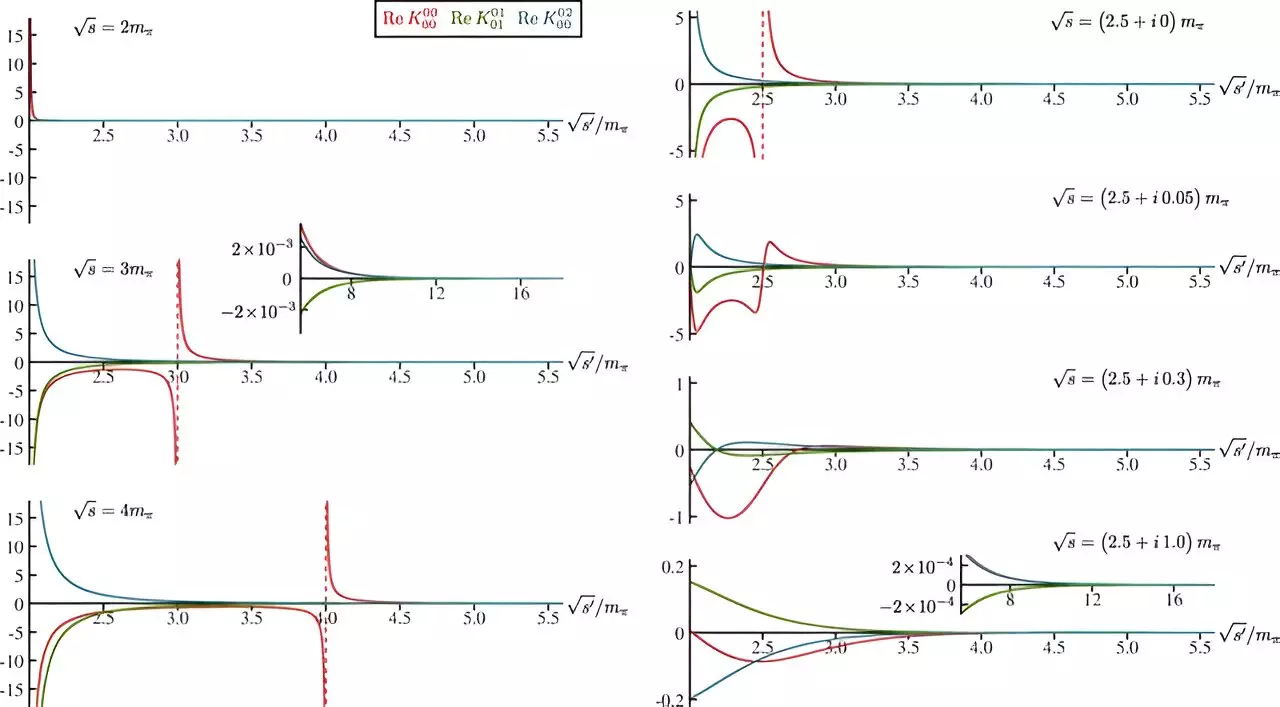In the realm of particle physics, the essential question of what holds matter together continues to provoke curiosity and scientific exploration. Among the myriad of forces at play, the strong interaction stands out as the backbone of atomic structure. Yet, despite our significant advancements, pivotal aspects of this force remain enigmatic. Recent findings published in Physical Review D by researchers at the Thomas Jefferson National Accelerator Facility mark a promising stride toward deciphering one of the less understood entities related to the strong interaction: the sigma meson. This particle not only enriches our understanding of nuclear dynamics but also ignites a deeper inquiry into the fundamental elements that constitute our universe.
Unpacking the Sigma Meson: Nature’s Elusive Puzzle Piece
The sigma meson is a curious creation in the particle world, composed of quarks just like the more renowned protons and neutrons. It emerges from the collision of two pions, where a temporary reconfiguration of quarks occurs through the strong force. However, this fascinating particle is notoriously unstable, existing only for a fraction of a second before decaying back into two pions. This fleeting existence poses formidable challenges for physicists attempting to observe and analyze it. As highlighted by Jozef Dudek, one of the lead researchers, the traditional methods previously employed proved inadequate for reliably assessing the properties of the sigma meson.
With a mass that is roughly half that of a proton, the sigma meson’s lightweight status complicates its study even further. While scientists have long understood that it plays a crucial role in various nuclear processes, such as proton-neutron interactions, the question of how it contributes to the fundamental strength of atomic structures remains largely unanswered. Physicists like Arkaitz Rodas Bilbao emphasize that comprehending these interactions is of quintessential importance to our understanding of existence itself—essentially, how the very essence of our being is forged by these subatomic entities.
Innovative Approaches: Supercomputing as a Key Tool
To confront these scientific mysteries, Dudek, Rodas Bilbao, and fellow physicist Robert Edwards ventured into uncharted territory by harnessing the power of supercomputing. In their quest, they initiated virtual experiments to delve deeper into the sigma meson’s properties. This approach stands out in an era where computational advancements can significantly hasten the pace of scientific discovery. By distributing computational tasks across thousands of processors, they transformed laborious calculations that could otherwise take centuries on a single personal computer into feasible endeavors that can yield results in a fraction of that time.
Utilizing the cutting-edge resources at Jefferson Lab and Oak Ridge National Laboratory, the team explored pion-pion reactions—essentially the processes that lead to the formation of the sigma meson. Relying on quantum chromodynamics (QCD), the prevailing theory concerning the strong interaction, they faced the intricacies that arise from its non-algebraic nature. Notably, their successful introduction of “dispersion relations” marked a major milestone, bridging the gap between theoretical complexities and computational execution. Such innovations highlight the synergy between theoretical groundwork and advanced computational techniques, emphasizing that collaborative effort is the cornerstone of scientific progress.
Tackling Future Challenges and Building a Framework for Discovery
The journey does not end with the sigma meson; the methodologies refined through this research can be adapted for studying other ambiguous particles, such as the kappa meson. As physicists peel back the layers of exotic particles, they inch closer to a holistic understanding of their complex interrelations. Nevertheless, formidable challenges loom ahead, particularly regarding the accuracy of mass parameters used in calculations. Current findings have led to approximations that, while practical, stray from true values, necessitating adjustments that will be critical for future research.
Moreover, it is evident that insights gleaned in theoretical physics are intricately connected to experimental endeavors. According to Dudek, the interplay between theoretical predictions and experimental observations is a continual feedback loop that propels the field forward. Each revelation regarding the sigma meson not only enhances theoretical frameworks but also facilitates new experimental designs, amplifying the resonance of discoveries throughout the scientific community.
In summation, the exploration of the sigma meson through innovative computational methodologies marks a significant step in unraveling the intricate web of the strong interaction. With the passion and determination of researchers like Dudek, Rodas Bilbao, and Edwards, the veneration of curiosity in the quest for knowledge will undoubtedly continue to illuminate the hidden forces that sculpt our universe. The path ahead promises a rich terrain of inquiry and discovery, beckoning both the scientific community and the curious public to engage with the marvels of particle physics.

